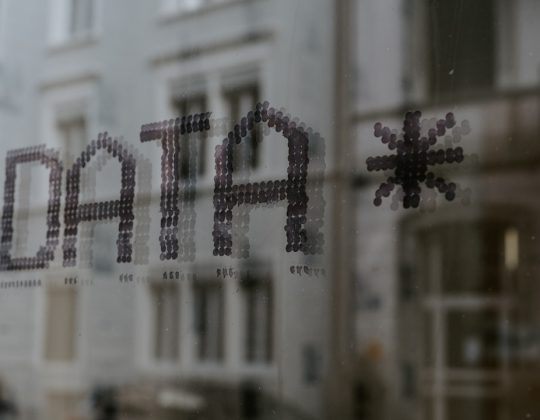Generative AI is everywhere. It’s creating art, writing music, solving puzzles, and even chatting like a human. But how do we know if it’s doing a good job? That’s where things get tricky. Traditional metrics don’t quite work for it. We need different ones. Let’s find out why!
Old Metrics Don’t Work Anymore
In the past, evaluating AI was easier. If it was solving math problems, you could just check the answer. If it was sorting emails, you’d measure how many it got right. Simple! But generative AI isn’t like that.
It creates stuff. Sometimes art. Sometimes essays. Even jokes! And what’s “right” or “wrong” in that? That’s not always clear. Let’s say an AI writes a poem. How do you score it? It’s not about being correct. It’s about being good.
That’s where we need new ways to measure things. We need to think in terms of quality, style, creativity, and even bias.
Let’s Talk About Why Generative AI Is Different
Here’s what makes generative AI special — and tough to measure:
- It’s creative: Two outputs may be totally different and still both good.
- It’s subjective: Different people might like different results.
- It learns from data: It might repeat things it has seen, or invent something brand new.
That’s not something you can score with a calculator.
Why Traditional Metrics Fail
Let’s look at some old-school metrics and why they don’t work here:
- Accuracy: This works for tasks with one right answer. But what’s the “right” answer in a story or a painting?
- Precision and Recall: Great for search engines. Not so much for poems.
- BLEU Score: Uses text overlap to judge how similar things are. But what if the best response is different?
These tools weren’t made for the messy, creative business of thinking like a human. They miss the point.
So… What Do We Measure Instead?
Let’s dive into the fun part — the new stuff!
1. Coherence:
Does the output make sense from start to finish? If an AI writes a story, is it logical? Do the characters remember each other?
2. Fluency:
Is the language smooth and natural? Are there weird phrases or awkward grammar?
3. Relevance:
Did the AI stick to the topic? Or did it wander off into something random?
4. Creativity:
This one’s really important. Is the idea fresh? Did it surprise you — in a good way?
5. Bias and Fairness:
Is the output respectful? Inclusive? Or does it repeat harmful stereotypes?
And here’s the kicker: Sometimes, we let humans decide. That’s called human evaluation. And yeah, it’s slow and expensive — but for now, it’s often the best way.
Examples Make It Real
Let’s say an AI writes a joke:
“Why did the neural network go to school? To improve its layers!”
Cute, right? A BLEU score wouldn’t care. But a human might laugh. So, which is better? That depends on the goal.

Or imagine an AI drawing a picture of a cat on Mars. Traditional image metrics might say: “This doesn’t match known data.” But to a viewer? It’s awesome!
Metrics That Are Coming to the Rescue
Luckily, researchers are inventing new tools just for this.
1. ROUGE:
Used in summarization, it checks how much overlap the AI’s summary has with a human-written one. Better than BLEU, but still just part of the puzzle.
2. Perplexity:
This measures how “surprised” the AI was while generating something. Lower perplexity means it was more confident. But high surprise isn’t always bad — it might mean creativity!
3. Fréchet Inception Distance (FID):
This one’s for images. It compares the style and content of AI art with real images. Lower = more realistic.
4. CLIPScore:
Used to see how well text and images match. Super helpful for AI that writes captions or descriptions.

Is There a Perfect Metric?
Nope. Not yet. Probably never will be. Because creativity isn’t a formula. It’s messy. It changes. It surprises us.
And humans are part of the equation. What one person loves, another may hate. How on Earth do you score that?
How AI Teams Handle This Problem
Since no metric tells the whole story, smart teams use many. They mix numbers with human judgment. Kinda like checking both the cake recipe and the taste test!
They also look at user feedback. Are people enjoying the AI’s work? Do they trust it? Are they returning to use it again?
Fun Ways to Rate AI
Yep, fun! Some companies go beyond numbers. Here’s how:
- Use upvotes or emoji reactions (like 👍 or 😂)
- Collect star ratings, just like for movies
- Ask users to pick their favorite among AI samples
This turns evaluation into something people actually want to do. And that means better data in the end.
AI Can Help Judge Itself Too
This is wild — but true. AI can be used to judge AI! There are special models trained just to rate outputs for quality. Sort of like an honest critic.
Of course, those models also have to be trained well. And kept fair. It’s a delicate circle!
Final Thoughts
Generative AI is like a digital artist, dreamer, and writer rolled into one. It’s creative, exciting, and pretty unpredictable. That’s why we can’t use old-school math to score it.
We need new tools. We need thoughtful reviews. And most of all — we need to remember that there’s no one-size-fits-all answer. Sometimes the best outcome is the one that makes us say: “Wow, I didn’t expect that!”
So next time you see an AI create something cool, ask yourself: not “Is this correct?” but “Is this amazing?”

And that’s a whole new way to think about success.








